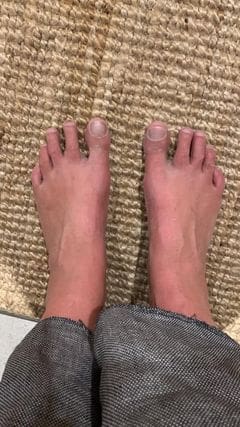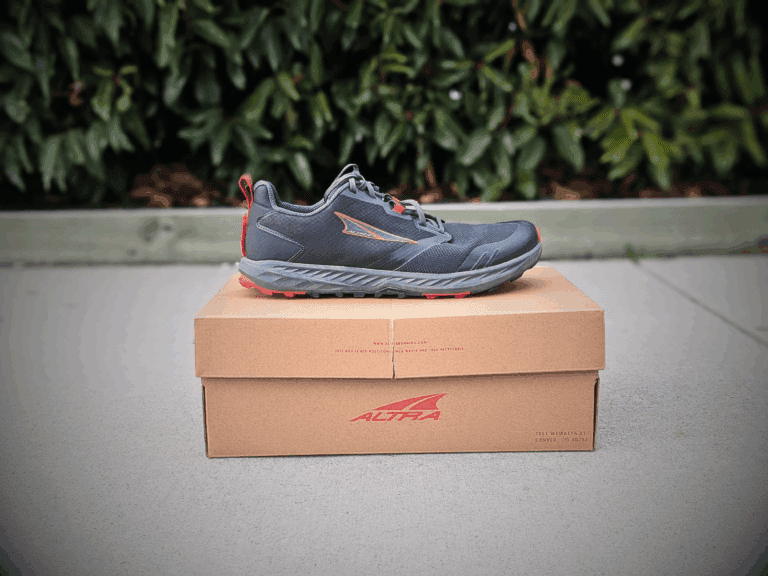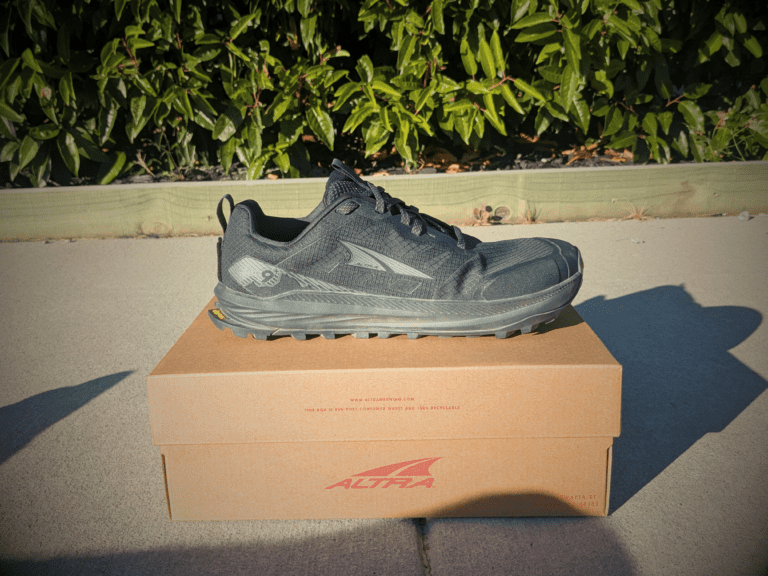Altra’s come in all shapes and sizes. Original fit, Standard fit, Slim fit.
But the 3 “fit” system doesn’t tell the whole story.
You’d imagine a huge difference if we compare the Escalante (a Standard fit) and Olympus (an Original fit). But in actuality, there’s little difference in how the two fit. As for the Slim fit, some will love it; some will hate it.
So how do you know which Altra model is suitable for you?
That’s where experience comes in.
In this post, I will break down each Altra fit system, list the shoes in those categories, and teach you how each model differs so you can pick the Altra running shoe that best fits your foot.
Affiliate Disclosure: By clicking through the links on this page and purchasing the products, you’ll be helping me out. This is done because I receive a kickback from the sellers at no extra cost to you! Thank you so much for supporting us!
Altra was once the widest option in the shoe store. I would always reach for them when a customer complained of narrowness, squishing of the toes, or a general uncomfortable feeling in conventional shoes.
Now the Altra range has expanded; only some models are wide by default. And that’s an attempt to capture more of the market.
For some, this is great. They can finally experience the free experience of a wide-toe box.
Those like my wife, who has a narrower foot, excels in some of the newer Slim fit Altra shoes.
Whereas I still gravitate towards the Original fit shoes, but there are exceptions on both sides.
As the name suggests, the Original fit type is a throwback to the early days of Altra.
Roomy and forgiving throughout the whole shoe.
Shoes such as the Lone Peak and the Olympus fall into this fit system, but even these differ slightly.
| Trail | Road |
| Lone Peak | Olympus Via |
| Olympus |
Generally, if you often find you’re constricted in running shoes, especially around the midfoot, the original fit is for you.
Where the nuance comes in is often the depth of the shoe.
For example, the Olympus. It’s an Original fit shoe, but it can sit pretty tight on the bridge of the foot because it’s not very deep.
Now, contrast that with the Lone Peak, and you’ll be singing a different tune.
The Lone Peak is deeper throughout the shoe, so I found my feet slipping around when hitting technical downhill trail sections. (Less true in the Lone Peak 7).
But Lone Peak has grown narrower over the years. And with the Lone Peak 7, I had a constriction in the midfoot, likely due to the tougher welded overlays. That’s where wide options come in. (More on that later)
The only categorized Original fit in the road range is the Via Olympus.
It’s a super wide option, and the mesh allows your feet to expand into the shoe on those long runs.
“Standard”…. What does that even mean?
Standard to what?
Well, this catch-all term is affiliated with most of the shoes in the Altra lineup, but that doesn’t tell the whole story.
You have shoes like the Timp, which is a Standard fit but feels very Slim fit to me.
Whereas the Escalante and the Superior both sit in the Standard fit category, but, to me, they sit in the Original range.
| Trail | Road |
| Timp | Provision |
| Mont Blanc | Torin |
| Superior | Escalante |
| Mont Blanc Boa | Solstice XT |
| Paradigm |
Looking at the table, you’ll see a mix of old and new in this category.
Old timers like the Paradigm are said to be a Standard fit, but the stability aspects make the shoe feel slightly different from other models.
The Standard fit category is one that I’d like to advise most people just to try.
It’s hard to find a common theme across the shoes in this category, and you may find the shoe you love even if you identify more with Slim fit or Original Fit.
Are any Altras slim?
It depends on what you compare to, but I agree with Altra here, some are slim.
Some new models, such as the Rivera and the Vanish Tempo/Carbon, are more “fitted.”
And honestly, even though I mentioned that I mainly stick with the Original fit, I’ve run in the Rivera and had no issues with the “Slim” fit.
So don’t let the word Slim put you off a model.
As long as you have no pressure points and your toes are free to spread and wiggle in the toe box, go with what feels the best!
| Trail | Road |
| Outroad | Rivera |
| Vanish Carbon | |
| Vanish Tempo |
You may notice that these are mainly newer models or at least redesigned models.
One example is the Outroad, which is much more forgiving and pushes more on the Standard fit end.
Altra has made an effort in the last few years to expand into the wider (or, I should say, slimmer?) market and offer a bridge to those coming from brands such as Hoka and Nike.
If that’s you, some Slim fit shoes could be the perfect place to start.
Just remember, you want that toe freedom!
To add a confusing point to the different shapes and sizes, 2 Altra models offer wide options too.
These wider options open up some models to many more foot types and can help you find perfection in fit instead of settling for subpar or just “okay.”
When to get a wide Altra shoe?
Most of the time, it will come down to the feel.
Like me, I found the Lone Peak just too restricting, and having those few extra mm in width would bring it to perfection.
Ultra runners out there may think about reaching for a wide option too.
Your feet will inevitably swell when you’re deep into a hot 100km or 100 miler. And you don’t want feet issues to account for a DNF.
Slipping on a dry, WIDE pair of Altra’s may save your race!
Just talk to your coach (or me, if you don’t have one) to work out when switching out your shoes would be a good option.
As I said already, the categorizations aren’t perfect. So they shouldn’t put you off trying a model, but they be a guide.
What it comes down to is your foot!
We all have different-sized and shaped feet, and every model will feel a little different to you.
In the below pictures, I’ve listed 3 different types of feet and which fit would likely work best for them.
Match your foot to one of these, and use that as a guide to finding your next pair of shoes.

Slim fit

Standard Fit

Original fit
If you’re between two of the examples, you’re likely between two of the fit systems too, and that’s fine. Remember, it’s only a loose guide anyway.
If you’re ever in doubt about a model, search in the Altra review section of Barefoot Run Review, and you should get a good idea of how the shoe fits!




Thanks for this post, grateful for the collated info. One question, do you think going up half a size would compensate for a Slim vs Original? New to Altra after buying the Lone Peak 7 so bought another Rivera 3, and was surprised how much less room there was. Considering returning the 11s Rivera 3 for a size 11.5 and hope it’s a wider toebox… Thanks Nick
Yeah, that’s one way to gain a bit more room in a Slim model, usually around 1-2mm in width, and 4-5mm in length. But as you see, it’s very little different in width, so you’re current size is too restrictive then 1/2 larger would make little difference.
Personally, because my foot is average width and depth, I avoid Slim models unless they serve a specific purpose. For example, the Outroad offers some unique features no other Altra can, therefore I put up with the tighter fit (switch out the insole for more depth), and go with that.
Instead of the Rivera, I suggest trying the Escalante, and switching the insole for something thinner. That’d get you closer to a Lone Peak fit. Not exact, but it’d be more comfortable than the Rivera.
Appreciate the input. I think I got attached to the particular color scheme on the Riveras but like you said a mm or two won’t make them particularly more comfortable, so I’ll probably take a look at the Escalante. Merci!
Looking to replace my first pair of Altra’s with a shoe with a little more cushion. I’ve run just over 300 miles in the lone peak 7’s and love them but they’re shot. I run 5 miles on a gravel trail twice a week. What would you recommend? Thanks
Hi Adam! Generally, I’d say that Altra’s have a lot of cushion already, so I’m interested to see what makes you want more cushioning?
To answer your question, it depends how well the Lone Peaks fit for you. If they did the job and fit was good, I’d suggest sticking with the Lone Peak range, because the shape and fit hasn’t changed much in recent versions.
Let me know a little more about your situation, and I can help further, Thanks!
Helpful info – I’ve been wearing Altra Lone Peak “Wide” versions for at least 5 years. But …. THEY ARE MOSTLY NOT AVAILABLE!! The Lone Peak 9+ was JUST announced …. and there are already many sizes where the wide version isn’t available.
I’ve gotten no response on altrarunning.com as to when they might be available.
Thanks for sharing the information.
A couple of important things to note. I see that only the Black version of 9+ has wide options avaiable on the Altra Running website, although, as you say, not all sizes. The same seems true for the Lone Peak 9 too (available in the grey version and the black version)
I have found that the grey version on amazon does seem to have all grey Lone Peak 9 Wide sizes in stock.
I hope that helps!